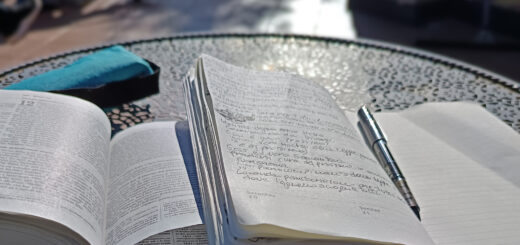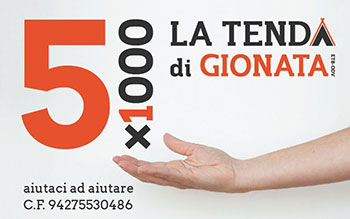Pasolini and “The Earth seen from the Moon”
.
Reflections by Luciano Ragusa
After the experience of Birds and birds (1966), Pasolini decides to make a film in episodes starring Totò and Ninetto Davoli themselves, with the aim of deepening his comic streak and proposing a disenchanted point of view on the world. The project, which should have been called What is cinema?, or Smandolinate, is downsized when the producer Dino De Laurentis proposes him to participate in a collective film entitled The witches, alongside the directors Bolognini, Rosi, Visconti and De Sica.
The idea of the film is to make the stories revolve around the theme of the witch woman, a topic distant from the themes of the Friulian director, who, however, responds to the proposal by dredging up a sort of comic drawn by himself which should have been titled The buro and the bura.
It was born like this The earth seen from the moon, which narrates the exploits of Ciancicato Miao (Totò) and his son Baciù (Ninetto Davoli), in search of the ideal wife and mother for their surrealist family: the absolute female protagonist, not only of this episode, but of the entire film, is Silvana Mangano, who has the task of representing the concept of the witch in different nuances.
Although the medium-length film has been seen by many critics as a parenthesis in Pasolini's filmography, in reality, there appears a certain continuity with Birds and birds.
Of course, no The earth seen from the moon, the blatantly ideological component of the previous film is missing, but it remains present in the plot vaporized by the fairy-tale script of the story.
Furthermore, the general climate remains: first of all the cheerful sadness of Totò and Davoli; in the second instance, an important father and son dialogue underlines how the ideals are now "under the shoes", which smacks of the crow - a character who in Good little birds represents the left-wing intellectual of the 60s – eaten and digested.
From a formal point of view, the model declared by the author is that of Chaplin's comedies, which, being silent, already contained all their expressive power in the image, a reason for which Pasolini drew the episode before arriving at a screenplay.
But what should we read behind this stylistic choice? Does it belong to new linguistic research?
The answer is probably affirmative, because it represents the director's first step towards the complete elaboration of a filmic language that must do without the bourgeois conceptualization of discourse, and which cannot be understood if approached only with the parameters of common sense (here because the earth must be seen from the lunar satellite).
What explicitly speaks in the film is the color, deliberately overloaded (the director's first experience entirely in color), which gives the footage a grotesque and surreal image, as if the color had entrusted the task of constructing a sense, given that speech no longer expresses anything except the emptiness of mass society. The last sentence of the film should be read in these terms: “being alive or dead is exactly the same thing”.
Serafino Murri writes in his beautiful book dedicated to the cinema of Pier Paolo Pasolini regarding medium-length films:
The moral of the film, which the author says is taken from Indian philosophy, is not, as some militant critics were led to write, defeatist and nihilistic, since there is no hint of pessimistic consensus with that statement: if anything, with far too much irony, we find a poorly concealed invitation not to accept the prevailing logic, to be lunar enough to distance ourselves from the monstrous tentacles of social nonsense and its puppet-like schematisms. The fairy-tale form therefore stigmatizes the falsity of life, a lost life, buried in a sea of grotesque behaviors and secondary needs. (S. Murri, Pier Paolo Pasolini, Il Castoro, Milan, 1994, pag. 77).
FILM SHEET:
Third episode of the film The witches. The others are: The Sicilian, F. Rosi; Civic sense, M. Bolognini; The witch burned alive, L. visconti; An evening like any other, V. De Sica.
Story, screenplay, direction: Pier Paolo Pasolini.
Assistant director: Sergio Citti.
Photography: Giuseppe Rotunno.
Scenography: Mario Garbuglia, Piero Poletto.
Costumes: Piero Tosi.
Original music: Ennio Morricone.
Editing: Nino Baragli.
Cast: Totò (Ciancicato Miao), Ninetto Davoli (Baciù), Silvana Mangano (Assurdina Caì), Mario Cipriani (a priest), Laura Betti (tourist), Luigi Leoni (the tourist's wife).
Production: Dino De Laurentis Cinematografica; Les Productions Artistes Associés.
Producer: Dino De Laurentis.
Filming: November, 1966; external: Rome, Ostia, Fiumicino; duration: 31 minutes.
Bibliography:
- Murri, Pier Paolo Pasolini, Il Castoro, Milan, 1994.
- P. Pasolini, Pasolini on Pasolini. Conversations with Jon Halliday, Guanda, “Biblioteca della Fenice” Parma, 1992.
- P. Pasolini, Corsair writings, Garzanti, Milan, 2012.
- Siti, F. Zabagli, Pasolini. For the cinema, Mondadori, “I Meridiani”, Milan, 2001.






